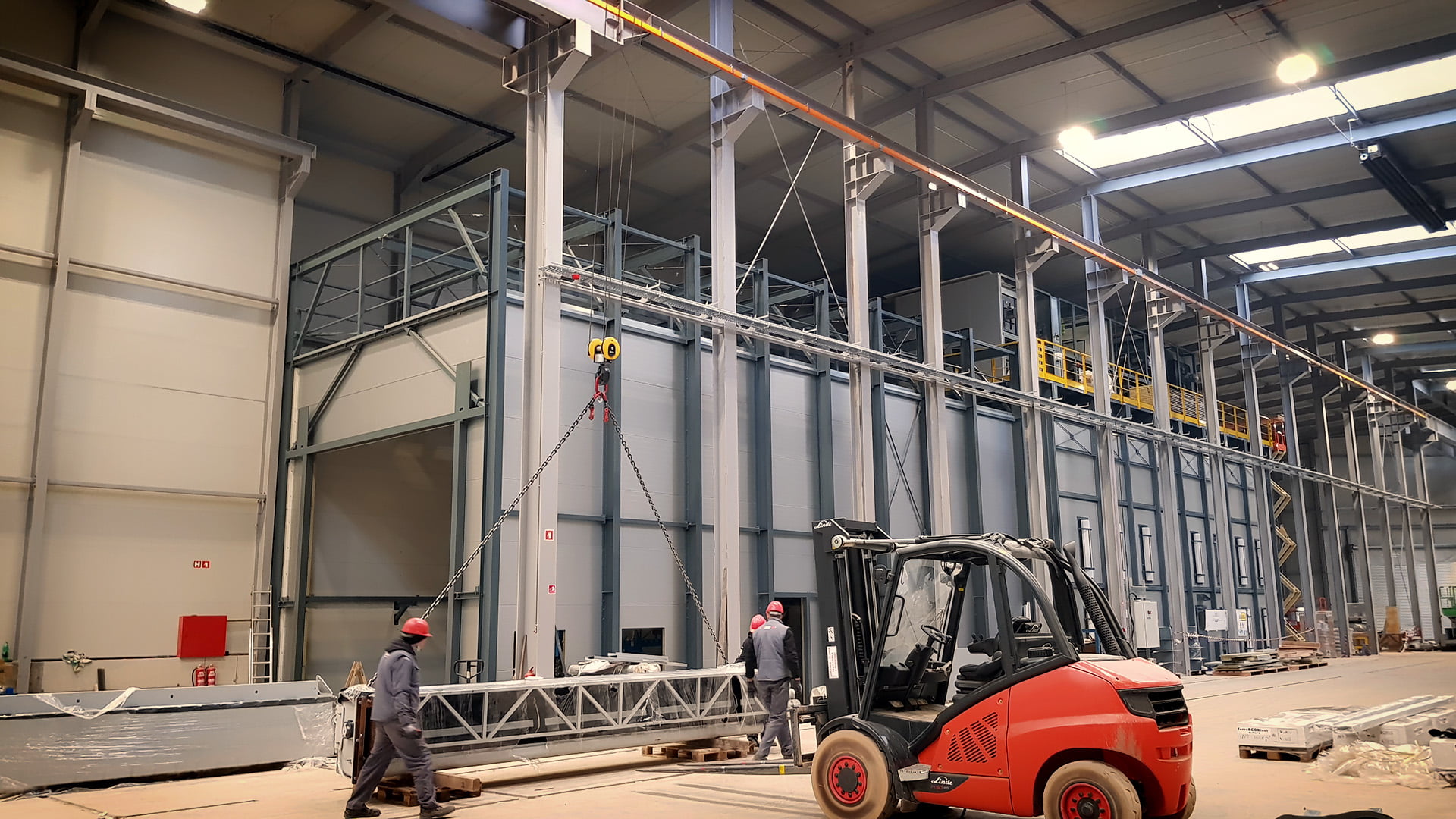Our latest blast room: an overview

We recently completed a new blast room for a Slovenian company specialized in the manufacture of railroad cars and other large, complex steel assemblies. The blast room, whose dimensions are 17m × 7m × 7m, is intended for manual blasting of large welded structures (train cars), with a partial degree of operational automation with special emphasis on ecologically clean and safe work. Work in the blast room takes place manually, while all other functions of operation, management, and safety take place automatically so that the worker can dedicate himself to quality and time-effective work in virtually ideal conditions.

The worker safety is ensured by personal protective equipment including a leather work suit, strong safety shoes, and shins, an air-conditioned protective blasting suit equipped with a micro-reducing valve and activated carbon filter, and a large panoramic glass visor that is constantly defrosted during use by a stream of filtered supply air.
The room itself consists of a concrete technological pit containing the abrasive collectors - electromechanically driven scrappers that transport the abrasive to the elevator. The elevator picks up the abrasive and sends it to a separator, where impurities are removed from the blasting medium which is then collected in a storage tank, below which the blasting section is securely attached.
This blaster is remotely controlled by a circuit-breaking switch on the blasting gun at the end of the flexible blasting hose. Each time the worker interrupts the blasting operation to manipulate an object or move around it, an automatic filling is immediately performed. Thus, there are practically no delays due to media loading.

Special attention to the design of the blast room was paid to the ventilation and filtration of the working space. The ventilation system runs from the ceiling to the floor and forces all dust particles to travel as fast as possible towards the cascade cleaners. The polluted air is purified in a dry filter. Dust accumulates in specially designed cartridges, which are cleaned by a vibrating system (shock effect) in the waste storage tank, from where it is occasionally emptied by hand. Purified air leaves the room through the upper part of the filter where a silencer takes care of the noise. In extremely difficult blasting conditions, cyclone separators are installed in front of the filter, increasing the filtration efficiency. In some cases, it is possible for the media to be reused. This is especially important when blasting with glass beads, which are extremely light and quite expensive.
The time spent researching the blasting process can lead to significant cost savings. These savings can be achieved by determining the nature of the surface to be cleaned, determining the required cleanliness according to the surface protection procedure used, selecting the right blasting medium, optimizing the use of equipment and personnel, and taking into account the conditions and constraints under which the work will be carried out.
